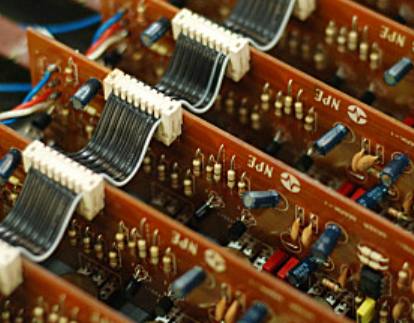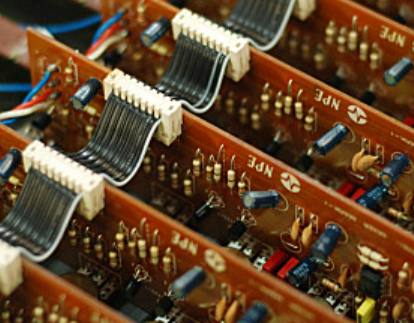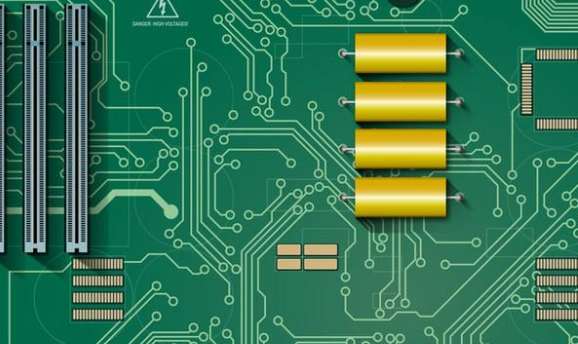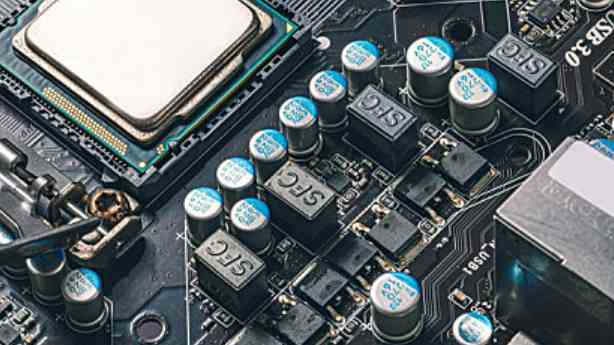
Through hole (via) is one of the important components of multilayer PCB, the cost of drilling usually accounts for 30% to 40% of the PCB board. Simply put, every hole in the PCB can be called a pass hole. In terms of function, pores can be divided into two categories:
First, is used as an electrical connection between the layers; The second is used for fixing or positioning devices. In terms of technological process, these holes are generally divided into three categories, namely blind via, buried via and through via. Blind holes are located on the top and bottom surfaces of the PCB and are of a certain depth. They are used to connect the surface circuit to the inner circuit below. The depth of the holes usually does not exceed a certain ratio (aperture). Buried holes are connection holes located in the inner layer of the PCB that do not extend to the surface of the PCB.
Both types of holes are located in the inner layer of the circuit board, which is completed by a through-hole molding process prior to lamination. Several inner layers may be overlapped during the through-hole formation process. The third type, called through-holes, runs through the entire circuit board and can be used for internal interconnection or as installation positioning holes for components. Because the through hole in the process is easier to achieve, the cost is lower, so most of the printed circuit board uses it, rather than the other two through holes. The following mentioned through holes, without special instructions, are considered as through holes.
From the design point of view, a through hole is mainly composed of two parts, one is the drill hole in the middle, and the other is the welding pad area around the drill hole, as shown in the figure below. The size of these two parts determines the size of the hole. Obviously, in the design of high speed, high density PCB, the designer always wants the hole as small as possible, the template can leave more wiring space, in addition, the hole is smaller, its own parasitic capacitance is smaller, more suitable for high speed circuit. But as hole sizes get smaller, they cost more, and don't keep getting smaller. It's limited by technology such as drill and plating. The smaller the holes, the longer it takes to drill, and the more off-center it gets. When the hole depth is more than 6 times the diameter of the hole, it is impossible to guarantee the uniform copper plating on the hole wall. For example, the thickness (through hole depth) of a normal 6-layer PCB board is about 50Mil, so the minimum drilling diameter provided by PCB manufacturers can only reach 8Mil.

The parasitic capacitance through the hole itself has parasitic capacitance to the ground. If the diameter of the isolation hole through the hole on the laying layer is D2, the diameter of the welding plate through the hole is D1, the thickness of the PCB board is T, and the dielectric constant of the substrate is ε, the parasitic capacitance through the hole is approximately: C= 1.4epsilon TD1/(D2-D1) The main effect of the parasitic capacitance through the hole on the circuit is to prolong the signal rise time and reduce the speed of the circuit. For example, for a 50Mil thick PCB board, if using a 10Mil bore with a 20Mil pad diameter, The distance between the welding pad and the copper floor area is 32Mil, so we can approximate the parasitic capacitance of the hole through the above formula as C=1.41x4.4x0.050x0.020/(0.032-0.020)=0.517pF, and the rise time variation caused by this part of capacitance is: T10-90=2.2C(Z0/2)=2.2x0.517x(55/2)=31.28ps. It can be seen from these values that although the effect of the parasitic capacitance of a single hole is not obvious, the designer should be careful if multiple holes are used to switch between layers in the route.
Similarly, there are also parasitic inductors in the presence of parasitic capacitance through the hole. In the design of high-speed digital circuits, the harm caused by parasitic inductance through the hole is often greater than the influence of parasitic capacitance. Its parasitic series inductance will weaken the contribution of the bypass capacitance and reduce the filtering effectiveness of the whole power system. We can simply calculate the parasitic inductance of a through-hole approximation using the following formula: L=5.08h[ln(4h/d)+1] where L refers to the inductance of the through-hole, h is the length of the through-hole, and d is the diameter of the central borehole. It can be seen from the formula that the diameter of the through hole has little influence on the inductance, while the length of the through hole has the biggest influence on the inductance. Using the above example again, the out-of-hole inductance can be calculated as L=5.08x0.050[ln(4x050/0.010)+1]=1.015nH. If the rise time of the signal is 1ns, the equivalent impedance is XL=πL/T10-90=3.19Ω. Such impedance can no longer be ignored in the presence of high frequency current. In particular, note that the bypass capacitor needs to pass through two holes when connecting the power layer to the formation, so that the parasitic inductance of the holes will be multiplied.
Through the above analysis of the parasitic characteristics of the holes, we can see that in the design of high-speed PCB, seemingly simple holes often bring great negative effects to the design of the circuit. In order to reduce the adverse effects brought by the parasitic effect of the hole, the design can be as far as possible:
Of course, you need to be flexible in your design. The perforated model discussed above is the case that each layer has pads, and sometimes, we can reduce or even remove the pads of some layers. Especially in the case of very large pore density, it may lead to the formation of a fault slot that cuts off the circuit in the copper layer. To solve this problem, in addition to moving the position of the hole, we can also consider reducing the size of the solder pad in the copper layer.







